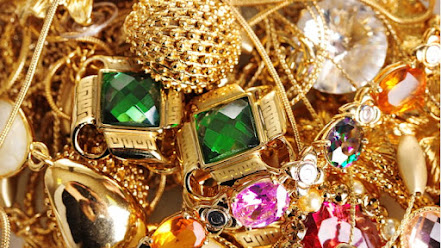Jewellery
One of the most elegant yet expensive fineries in the world -- Jewellery. The earliest known jewellery was not created by Homosapiens, but by Neanderthals living in Europe. It consisted of small beads and shells dating back to 150,000 years ago. Nowadays, high-demand jewellery are mainly made out of gold, diamonds, platinum and many rare stones. But what exactly is the process?
India is one of the many countries that are iconic for their jewellery, specifically...gold. They're hand-made with intricacy. It starts off with a planning sheet where they get an idea of how they want this accessory to look. After, they begin creating a rough mold of the neck and start adding tiny pieces of gold. In order to combine the small fragments, they lightly burn the edges shifting the bright yellow into a dull coal-like colour. When they finish plating the entire necklace with gold, they repaint the entire piece with another layer of gold. Finally, they begin adding diamonds, rubies, sapphires, emeralds, very carefully into their designated places. This process takes approximately 17 days but that changes depending on the urgency.
While some countries still stick to the old-traditional-hand-craft method, many countries, such as the United States, have evolved and found a shortcut using machinery, but when it comes to jewellery, traditional methods are superior.
I was quite fortunate when during my recent trip to India, I stumbled across this magnificent gold making business: Swarnasri Jewellers in Vijaywada. They showed us the entire jewellery making process step-by-step. I was astonished to find out many big jewellery companies depended on them to supply jewellery which they in turn buy, brand and then sell with a profit. Overall, this was a very thrilling experience and I am definitely intrigued on finding out more about this fascinating industry.


This is awesome post Nivedya
ReplyDelete